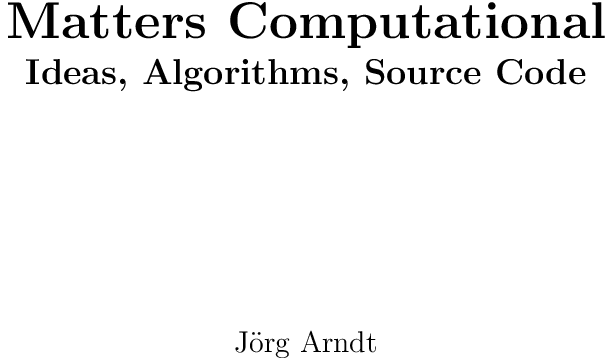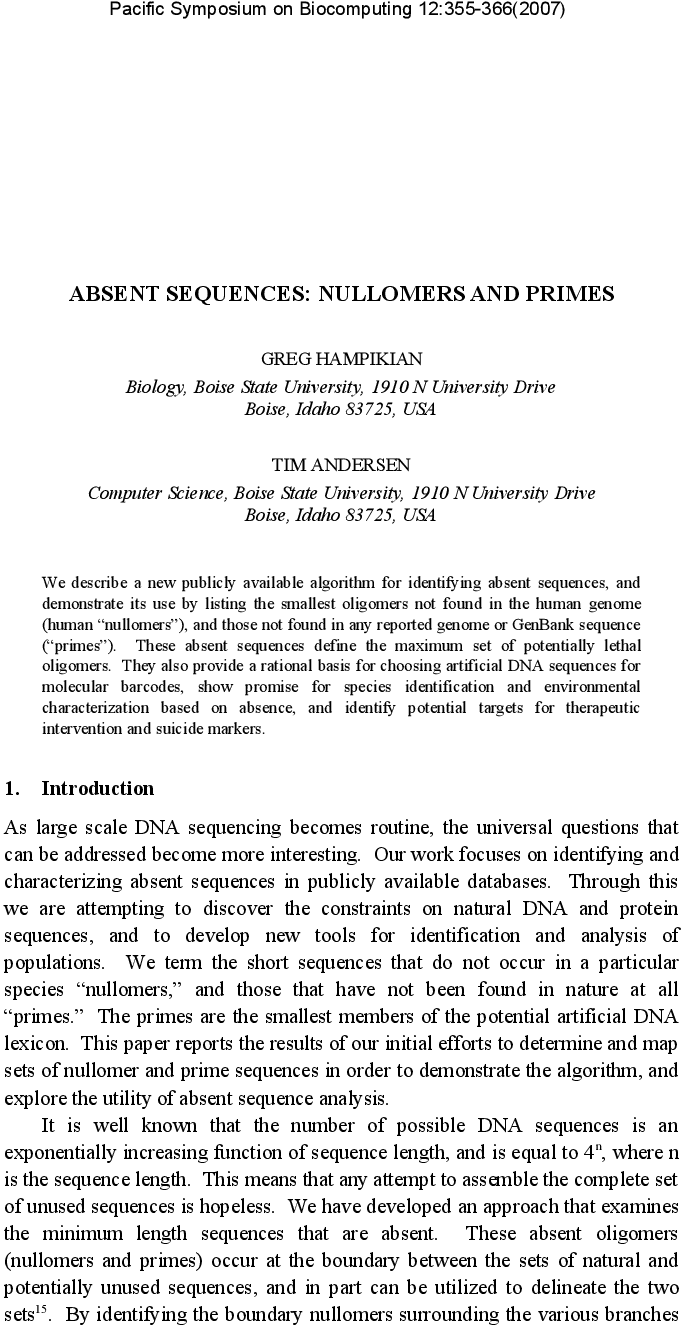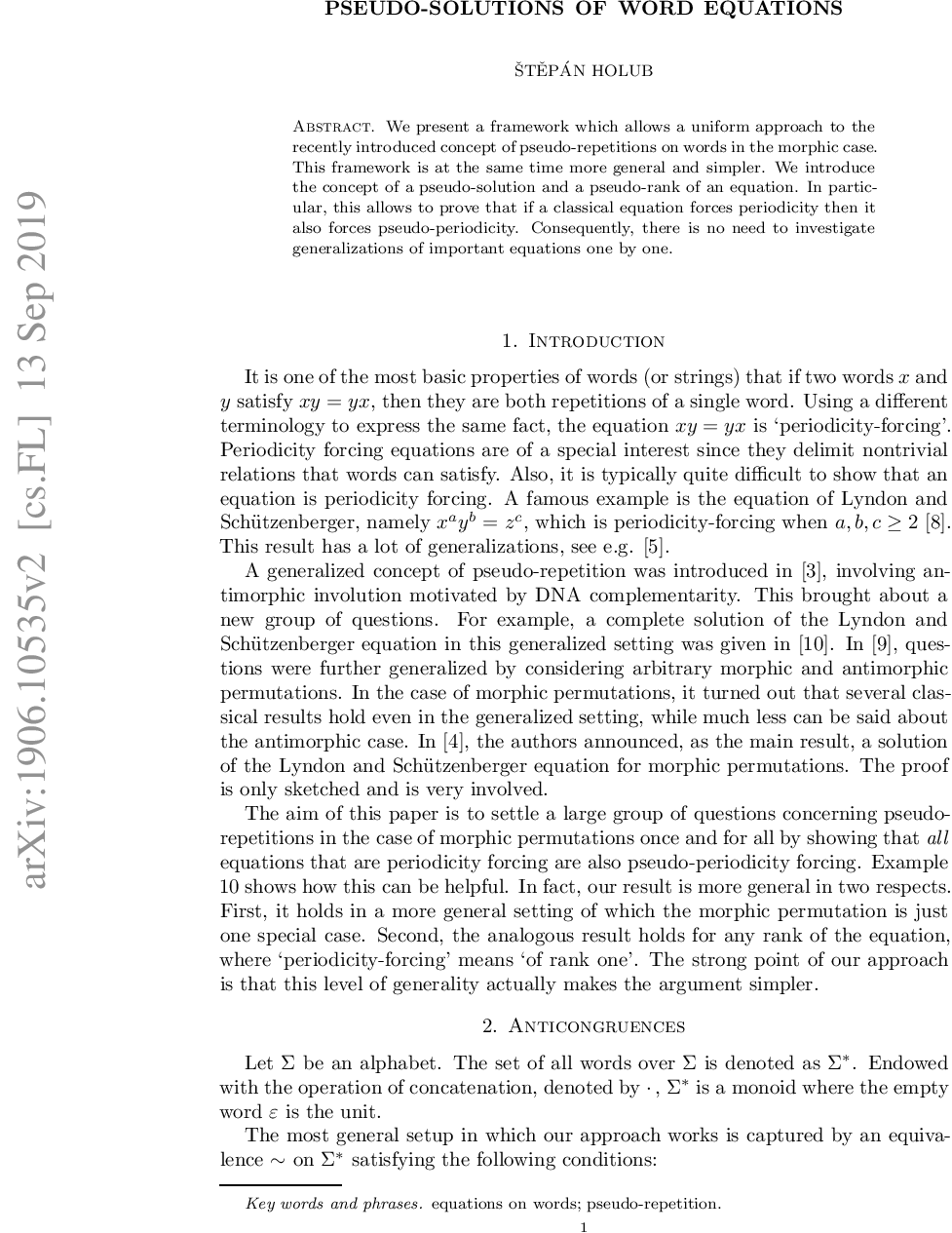

Wellcome to Sergey Kirgizov's library,
You can find here all papers liked or uploaded by Sergey Kirgizovtogether with brief user bio and description of her/his academic activity.
Sergey's personsal site : http://kirgizov.link.
☆
1
Comments:
Some algorithms:
* [Efficient computation of absent words in genomic sequences](https://pubmed.ncbi.nlm.nih.gov/18366790) paper by Julia Herold, Stefan Kurtz and Robert Giegerich.
* [keeSeek algo](http://www.medcomp.medicina.unipd.it/main_site/doku.php?id=keeseek)
from
[keeSeek: searching distant non-existing words in genomes for PCR-based applications](https://academic.oup.com/bioinformatics/article/30/18/2662/2475409) paper by
Marco Falda, Paolo Fontana, Luisa Barzon, Stefano Toppo and Enrico Lavezzo.
Can these algorithms be improved ?
☆
1
Comments:
A famous example of the periodicity forcing word equation is $xy =
yx$. It means that if a word $xy$ equals to a word $yx$, obtained by
a _cut-and-swap_ process, there exists a word $w$ and integers
$i,j$ such that $x = w^i$ and $y = w^j$. The paper's Section 1 and 5 contain a
brief yet very helpful overview of existing results about periodicity
forcing.
About ten years ago, Czeizler, Kari and Seki, in their work [On a
special class of primitive words](https://www.csd.uwo.ca/~lkari/mfcs.pdf), have introduced a notion of a
pseudo-repetition. It can be explained with the following example.
When DNA molecules are regarded as words, the Watson-Crick
correspondence $$G \sim C, A \sim T$$ between guanine ($G$) and
cytosine ($C$), adenine ($A$) and thymine ($T$) allows us to say that
a word $ATCGATTGAGCTCTAGCG$ contains the same information as the word
$TAGCTAACTCGAGATCGC$. A pseudo-repetition is a repetition of a word
or its Watson-Crick complement. So, for instance $ATC \sim TAG$, and
the word $ATCTAGATCATCTAG$ is a pseudo-repetition of the word $ATC$.
In an abstract algebraic setting (involving monoids, morphic
permutations, equivalence classes and anticongruences), the author
studies an extension to the notion of periodicity forcing, using the
recently introduced concept of pseudo-repetitions and related
ideas. Holub proves, for instance, that any periodicity forcing
classical word equation also forces a pseudo-periodicity. He provides
interesting new results and generalizations of already known results.
MathSciNet:MR4074724.



Comments: